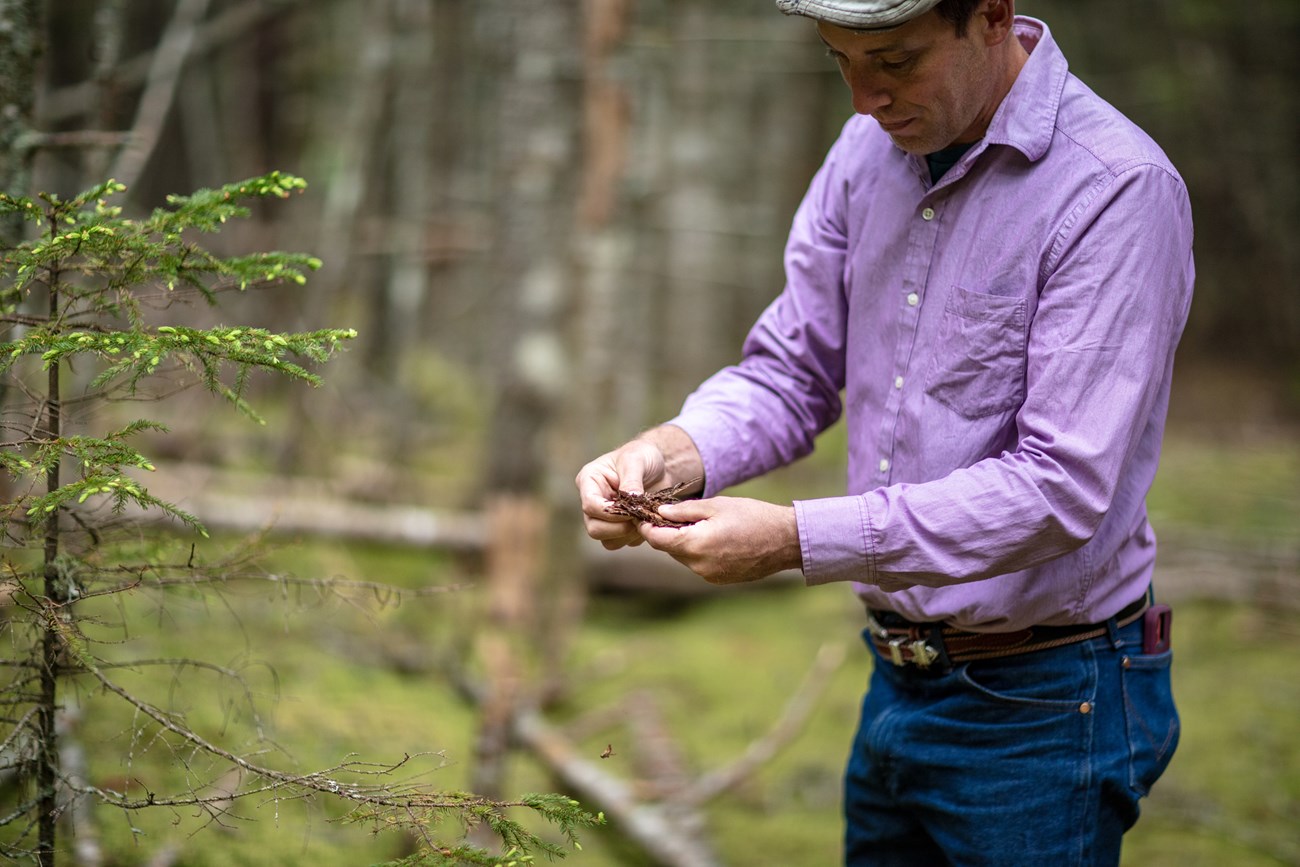Last updated: September 30, 2022
Article
Future Forest Trajectories in Acadia National Park: Identifying management priorities

Photo by Eliot Dudik/Schoodic Institute
The forests of Acadia National Park, protected for more than a century, are home to a diversity of trees, plants, and animals. How climate change, insects, land use, and other disturbances will interact and shape Acadia’s future forests remain largely unknown. Park managers face threats such as invasive shrubs and damaging insects, and models predict dramatic but conflicting shifts in future forest conditions.
Previous studies of forest change in Acadia used data from all six New England states at a coarse resolution. A new research project will “zoom in” to 30 meter resolution, and incorporate more specific details about local soils, forest composition, management, and climate. Led by 2022 Second Century Stewardship Fellow Matthew Duveneck of the New England Conservatory and Harvard Forest, the effort will include data from the National Park Service Northeast Temperate Network forest health monitoring.
After refocusing the model, Duveneck will simulate the outcomes of different disturbance and management scenarios, which he will identify and develop in collaboration with park staff. Questions to explore include: Should managers expect red spruce in Acadia to transition to other dominant species over the next 100 years? What will happen to hemlock forests following mortality from the hemlock wooly adelgid? How might forests respond to a future unknown parasite that could severely impact all of a specific species? Where should managers resist, accept, or direct future forests?
“How the spruce forests in Acadia will respond to climate change is an open question,” said Kate Miller, Quantitative Ecologist with the National Park Service, who coordinates forest monitoring in national park sites from Maine to Virginia. The high-resolution simulations Duveneck is developing will go a long way toward predicting local patterns of resilience and change on a scale that is relevant today.
